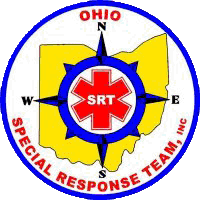What's it Take to Become a Serious Search And Rescue K-9 and Handler?
- OSRT Information

- Feb 13, 2023
- 3 min read
Reality-wise, virtually any intelligent dog can become a search and rescue K-9. After all, most dogs are essentially born with a great schnoz! In fact, an average dog has more than 300 million scent receptors compared to a human with a mere 5 million. Even a dog's brain can beat out that of a human, with sensory capabilities of more than 40 times our potential. It's been suggested that a dog's nose is between 100,000 and 1,000,000 times more sensitive than ours.
Virtually any dog? Seriously! In Japan, Momo, a 6.6 lb chihuahua became the world's smallest breed of dog to qualify for police duty, as a search-and-rescue specialist.
But all these sensory capabilities do not guarantee an effective SAR K-9
As in every other serious endeavor, becoming a true SAR K-9 takes training and an enormous amount of focus. To be genuinely effective, search and rescue K-9s will train for more than 600 hours in all weather and in all terrain – and that's just to become basically competent. It's more of a starting point than a final accomplishment. For example Ohio Special Response Team K-9s train together for four to seven hours per week – every week – and they work separately for an additional ten to twenty more. Don't panic. It isn't as difficult as it seems.
As well, competent SAR K-9s should be certified via a recognized, formal, credentialing body such as the International Police Work Dog Association, the National Association for Search and Rescue, or the United States Police Canine Association, to name a few. These credentials require the K-9 and handler to complete formal and controlled qualifications tests in the field.
In addition, SAR K-9s can, and do, frequently have more than a single competency. These can include one or more of the following: Trailing, Air Scent, Water Scent, Live Find, Human Remains Detection, Crime Scene Detection, Disaster Live Find, Electronics Detection, Explosives/Gun Powder, and others. A major key to selecting an effective SAR service is the type of certification(s) the K-9 has along with the name of the credentialing body. OSRT K-9 members carry copies of their dog's credentials to every deployment.
Finally, don't discount the training of the K-9 handlers themselves. Any search team bringing K-9s to an incident should ensure their handlers are credentialed in search techniques right along with their dogs. It's extremely easy for an ineffective search team to obliterate critical evidence as they plow through the search environment. Even as basic a clue as disrupted grass indicating passage of a lost individual can be trampled into the mud by searchers who are not trained to be clue conscious. OSRT search teams are trained in identifying and preserving evidence in the case of a crime scene.
When it comes to training, OSRT search members are attend programs by the National Association for Search And Rescue, Mountain Rescue Association, FEMA, The National Disaster Preparedness Training Center, National Domestic Preparedness Consortium, National Criminal Justice Training Center, and a wide range of credentialing bodies.
Want to become a K-9 SAR handler? Is your dog interested? Did you ask him, or her? While it all sounds difficult, as with the previously mentioned skill levels, each K-9 and handler working with the Ohio Special Response Team progresses at their own rate and comfort level. What's even more important, K-9 handlers with OSRT work together to mentor one another so all those hours add up in a less frightening manner.
Would you be interested in becoming part of Ohio's premier volunteer search and rescue team? The Ohio Special Response Team is always on the lookout for focused individuals who want to make a difference in their communities. Whether it's becoming a member of our basic operations support cadre, a qualified search and rescue technician, a search K-9 handler, a drone specialist, a rope rescue technician, disaster damage assessment responder, or more than one of these, there's a place for nearly every interested person in our seven units throughout the state of Ohio.
Sounds difficult, doesn't it? It's not, and you need not be superman or super woman. The members – male and female – of OSRT are people just like you and our ages range from 23 to 70+. We merely take the time and effort to train and become proficient at search and rescue and we make ourselves available to respond to those in need.
OSRT members strive to bring lost souls home to their families!
The Ohio Special Response Team is a 501(c)(3) non profit organization of volunteers. We are funded via donations and unit fund raising activities. Technically, the organization provides a wide range of force multiplier services to law enforcement, fire departments, and local/state authorities in a wide range of capabilities. However, whenever someone goes missing, family members can also contact OSRT to request assistance.
























Comments